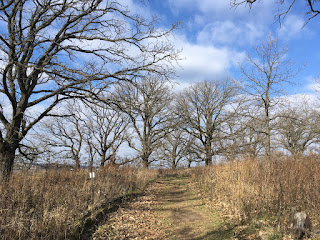“You don’t need a weather man to know which way the wind blows.” (Bob Dylan)
Parks cost money to operate. I remember paying admission fees to
state parks when I was a young man. I also remember the parks being
well maintained with lots of staff and offering varied educational
programs.What has changed?
In 1995, taxpayers supported Wisconsin’s state park system with the
help of user fees. Over the next 20 years, the taxpayers’ portion
gradually shrank to the point that user fees supported the state park
system with the help of taxpayers. In 2015, the governor proposed that
the state parks become entirely self-funding and removed all general
revenue from the parks’ budget–a 28% cut for the system. To make up for
that deficit, entrance and campground fees were increased. Staff,
maintenance, education and maintenance were cut. The math hasn’t worked
out very well in terms of creating the same experience.
How we spend tax dollars is a reflection of our
priorities.
In this state, the emphasis has shifted to bigger and more roads, newer
athletic stadiums, and lower taxes on the wealthy. Natural resources
and education? Not so much. Yesterday, our state senate passed a mining
bill that pitted environmentalists against corporate business. One
legislator said: “
We’re giving away the best parts
of ourselves. We’re a great state. We have clean water and we need
someone to stand up and protect it.”
The state parks in Wisconsin are just barely getting by with support
from lots of volunteers and “Friends” programs. It isn’t hard to see
the difference. For example, last year, it took over a month to get our
state stickers mailed to us because there wasn’t staff available to
pick up the fees from the iron rangers in which we placed our check.
When we called to see why our stickers hadn’t been mailed, we were told
of the staffing issue and to write a note that the annual sticker had
been applied for and place it in the window of our vehicle.
I frequently read rv blogs and forums in which people from around the
country complain about the high cost of our entrance fees and
campgrounds without commensurate quality, some saying they avoid
Wisconsin for that reason.
In an era of expanding waistlines of young and old, along with people
who can’t tell the difference between fake news and facts, there is
good reason to encourage people to connect minds and bodies with
nature.
Shifting from a state-based funding system to a user-based
system seems like a bad idea when we continue to use general funding to
build new athletic stadiums to watch others exercise, bigger and better
roads that enable us to get home faster to watch cable tv, while
lowering taxes to primarily benefit the rich who can afford lakeside
homes protected by gates and cameras. Don’t even get me started on the
recent corporate welfare to bribe
Foxconn (a Chinese electronics company) with billions of tax dollars in exchange for a promise of jobs.
I know that Wisconsin isn’t the only state with these problems, but
we used to take pride in this state that we were well above average in
most categories. While we are no longer one of the highest taxed
states, the frayed edges are showing. You have to act like a great
state, not just say you are a great state. You have to get outside to
know which way the wind blows.
Today’s hike was at Governor Nelson State Park on the north shore of
Lake Mendota. The park is surrounded by million dollar homes and
overlooks the state capital in the distance. I spent some time staring
at the lake and walking a short Woodland Trail that views both the front
yards of mansions and sacred llIndian burial mounds (Panther, Conical).
Near the trailhead, there is a boat landing area with restrooms still
open and a large public beach with views of the lake and the state
capital in the distance.
I didn’t see another person in the park during
my hike. The park office was closed.


























































